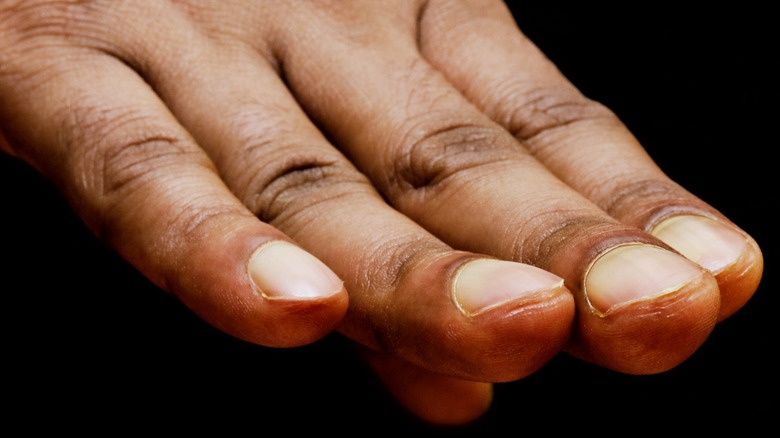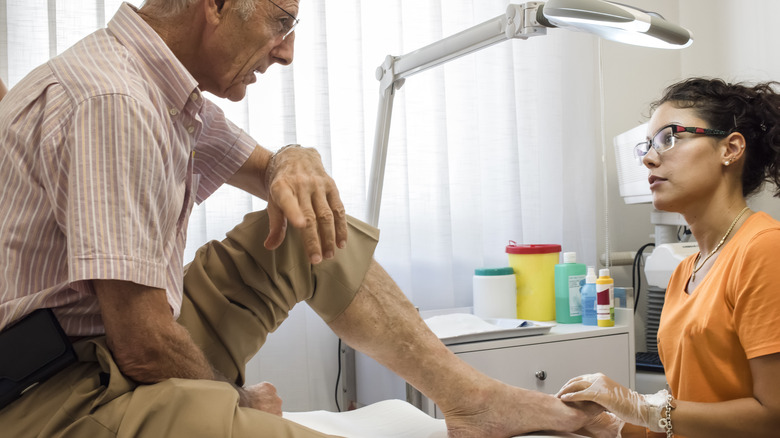What It Means If You Have Clubbed Nails
Whether due to ongoing wear and tear, an injury, or an underlying health condition, our fingernails and toenails can undergo various changes in color, shape, size, and more. For some people, this can include splitting, yellowing, pitting, or the formation of white spots on the nail's surface (via Mayo Clinic). While some of these changes may be temporary and ultimately no big deal, other kinds of changes may signal a potential medical issue in need of attention.
This can be the case if a person develops clubbed nails. This condition causes one's nails to take on a bulbous appearance, according to Cleveland Clinic experts. Usually first emerging in the thumb and pointer finger, those with clubbed nails may notice that their nails become spongy, warm upon contact, or appear red in color. Most notably, clubbed nails are characterized by nail expansion, in which the nail begins to wrap around the sides of the fingertips and curve downward over the top of the finger or toe.
Clubbed nails are predominantly associated with lung cancer
The formation of clubbed nails doesn't happen overnight. Rather, it often develops slowly over time, reports the Cleveland Clinic. Those with digestive disorders, liver disease, thyroid issues, or a family medical history of the condition may be more prone to clubbed nails, as it often indicates the presence of a serious health condition.
According to 2022 research published in StatPearls, out of the 1% of internal medicine department admissions involving cases of clubbed nails, 40% are related to serious disease. The majority of cases are tied to lung problems, with clubbing observed in up to 15% of patients diagnosed with lung cancer. Clubbed nails have also been linked with heart disease, infectious disease, gastrointestinal disease, and more.
Additionally, in a 2006 study published in the scientific journal BMC Infectious Diseases, researchers noted that clubbing is present in approximately one-third of patients in Uganda with pulmonary tuberculosis. The study team found a relationship between clubbed nails and those with recurrent cases of tuberculosis.
Treating the underlying cause of clubbed nails
While clubbed nails themselves are not considered dangerous, it's important to treat the underlying cause. For cases of lung cancer, therapies such as chemotherapy or radiation therapy may be used. Surgical intervention or prescription medications may also be part of one's treatment plan. Clubbing related to celiac disease may involve changes in one's diet. For those with congenital heart issues, surgery may be required. People with thyroid conditions may need medication or surgery.
While your nails may heal on their own following treatment, this is not always the case, according to the Cleveland Clinic. Therefore, the best way to reduce your chances of developing clubbed nails in the first place is to reduce your risk for related diseases. This includes refraining from smoking, which heightens one's risk for lung cancer and heart problems. Limiting alcohol consumption and keeping up with annual doctor check-ups are also important. It's also worth noting that clubbed nails generally do not hurt. For a small number of people, clubbing can also develop independently of any kind of health condition.


